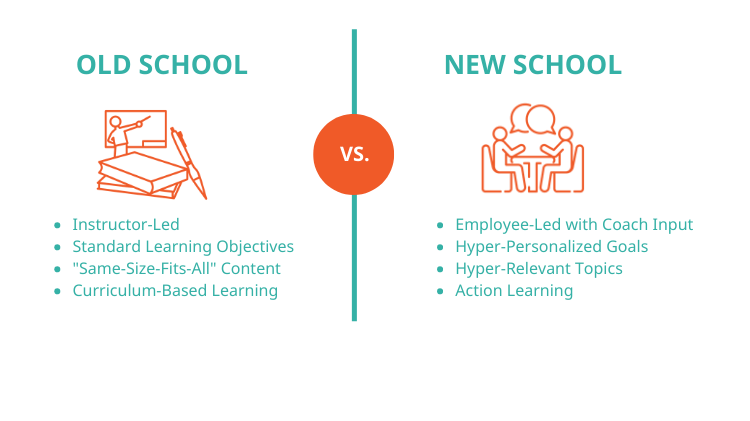When it comes to talent management and the talent war, we’ve heard it all. Some say, “The war for talent is over. The talent won.” as well as “The war for talent is over; everybody lost.”
In fact, phrases like the “talent cliff,” “skills gap,” or “talent gaps” have become popular terms for the monster under the bed that’s keeping many senior leaders and HR professionals awake at night. As HR leaders search for talent in a competitive market, many organizations become acutely aware of the evolving and tricky demands of the talent management process.
What is Talent Management?
According to most experts, talent management is the collection of business processes that correspond to an employee’s lifecycle: talent acquisition, learning and development, performance management, and retention. However, that definition might not go far enough as we do battle in the war for talent.
Secrets to Winning the Talent War
The first secret to winning the war is to view talent management through a new lens. Rather than recognizing learning and development (LD) as one of four phases in the talent management lifecycle – it should be viewed separately. Forward-thinking organizations recognize that LD is a constant throughout the entire employee lifecycle. And, LD is the key to success in the other three areas of talent management.
Talent acquisition: Today’s job seekers evaluate an employer based on LD opportunities. According to Gallup, “Millennials are not pursuing job satisfaction – they are pursuing development. Purpose and development drive this generation, and they expect opportunities to learn and grow.”
Performance management: According to trainingindustry.com, LD & performance management should be integrated: “Performance management must free itself of its reputation as a punishment and reward system, and organizations must fully integrate it with training efforts and align it with business goals. When training supports the workforce, and the workforce is managed based on known performance goals, the business will enjoy success.”
Retention: According to LinkedIn’s 2019 Workplace Learning Report, “94% of employees state they would stay at a company longer if the organization invested in helping them learn.”
Talent Management Framework
In addition to managing talent throughout the employee lifecycle, we present an additional framework of talent management essentials: Identification, Evaluation, Connection, and Evolution.
Identification
A solid talent management process also identifies talent gaps and what skills high potential employees need (or will need). This blueprint should also be integrated with other strategic and business plans. Many times, this is where succession planning (and use of the 9 Box Matrix) come in as well as creating the execution plans.
Evaluation
Talent management is heavily influenced by the employer brand. Therefore, organizations should conduct primary research and survey employees and prospects to evaluate the organization’s reputation as an employer. Additionally, Glassdoor and other similar platforms that allow employees to rate their experience should be monitored to track data and become alerted to trends. Candid assessment, evaluation, and introspection will not only help maintain a good employer brand but will also lead to a healthier culture.
Connection
Apathy and poor performance can result when employees don’t feel like their contributions are connected with the organization’s performance or even to the greater good of society. Individuals and teams need to understand how their efforts tie back to performance. According to Gallup’s research, younger members of the workforce prefer to work for a purpose and develop competencies instead of simply showing up, doing the work, and collecting a paycheck.
Evolution
As technology and global trends continuously disrupt the business landscape, younger generations of employees expect opportunities for ongoing skill development. They expect employers to provide leadership development programs or they will look elsewhere.
Ironically, while leadership development is one of those oft-overlooked programs, one of the biggest benefits is increased employee engagement and decreased turnover. But not just any leadership development program will do. The most effective programs are clearly defined, measure effectiveness, focus on skills that apply to the work, and ensure results align with company strategies, according to a Deloitte study from 2019.
Second Secret: Talent Management KPIs
The second secret to success in talent management (and to winning the talent war) is in setting objectives that delve into each of these themes. In other words, identification, evaluation, connection, and evolution aren’t just topics for discussion, they are the fodder for goal setting, measurement, and monitoring. This framework may help you in the formulation of your talent management KPIs.
Third Secret: Develop the Talent You Have
When talent is scarce, superstars are hard to recruit. And anytime you bring in new talent, the risk remains. They may have the right talent, but not the right fit for your culture. It’s often natural to overlook the talent you already have. Challenge yourself to develop your high potential talent – the ones with good aptitude, great cultural alignment, and eagerness to learn new skills.

Need help to win the talent war?
IMPACT Group can strengthen your organization’s talent management programs by assisting with leadership development programs. In fact, on a 5-point scale, participants in IMPACT Group’s programs reported a 5.0 in coaching effectiveness, and 4.8 would recommend the program. Learn more about how IMPACT Group’s Emerging Leader’s Development Program can enhance performance by checking out this case study.












